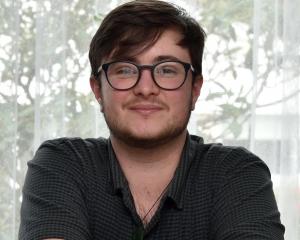
The paper published in the Journal of the Royal Society of New Zealand, led by University of Otago paediatric dentistry senior lecturer Dorothy Boyd, said children now had more access than ever to unhealthy foods and sugar-sweetened beverages.
"Labelling and marketing of many foods and drinks is confusing — for example, fruit juice is high in free sugar, and many families do not realise that," the paper said.
"Services are stretched and there needs to be a much bigger driver for prevention of dental decay than treatment.
"Treatment does not stop decay but rather manages the pain and infection that decay causes.
"If we have a predominantly treatment-focused approach, we will not see things improve for children."
Urgent and radical change was needed to address the issue, but the problem was too big to be tackled by the oral health service alone. It overlapped with many other health needs.
Dr Boyd said dental decay was the most prevalent non-communicable childhood disease in New Zealand, and those from low socio-economic backgrounds and those without access to community water fluoridation were most affected.
New Zealand had a long tradition of providing publicly funded dental care for young people. Yet by age 5, 60% of Maori, 70% of Pasifika and 33% of non-Maori/non-Pasifika children had already experienced dental decay.
The long waiting lists, inconsistent collaboration between primary, secondary and tertiary care and inconsistent access to, and types of, care offered across the country, were compounding the suffering of children, Dr Boyd said.
"The entire oral health-care workforce is under-resourced, and Maori and Pasifika are under-represented in it," she said.
The problem was too far-reaching to be managed without a collaborative and co-ordinated approach across health and society as a whole, she said.
A Dunedin child dentistry provider, who wanted to remain anonymous, agreed.
"We’re the ambulance at the bottom of the cliff.
"No-one has ever prevented dental decay by going to the dentist. It doesn’t happen.
"It’s far more a dietary and social problem."
Dr Boyd said she did not believe the closing of school dental clinics was the cause of the problems.
"What we know is that just filling teeth in school clinics without parents present means there is very limited opportunity to address prevention of decay, because you need the parents and caregivers on board for that."
Preventing dental caries also required buy-in from society, government, industry, health professionals and the public, to understand and support a shift of focus away from getting fillings to placing value on children staying caries-free, she said.
Reducing the extent of unhealthy foods marketed to children and addressing the affordability of healthy food, fluoride toothpaste and toothbrushes would be a good start, she said.
"All children deserve to eat, sleep, learn and play without dental pain and oral infection."












